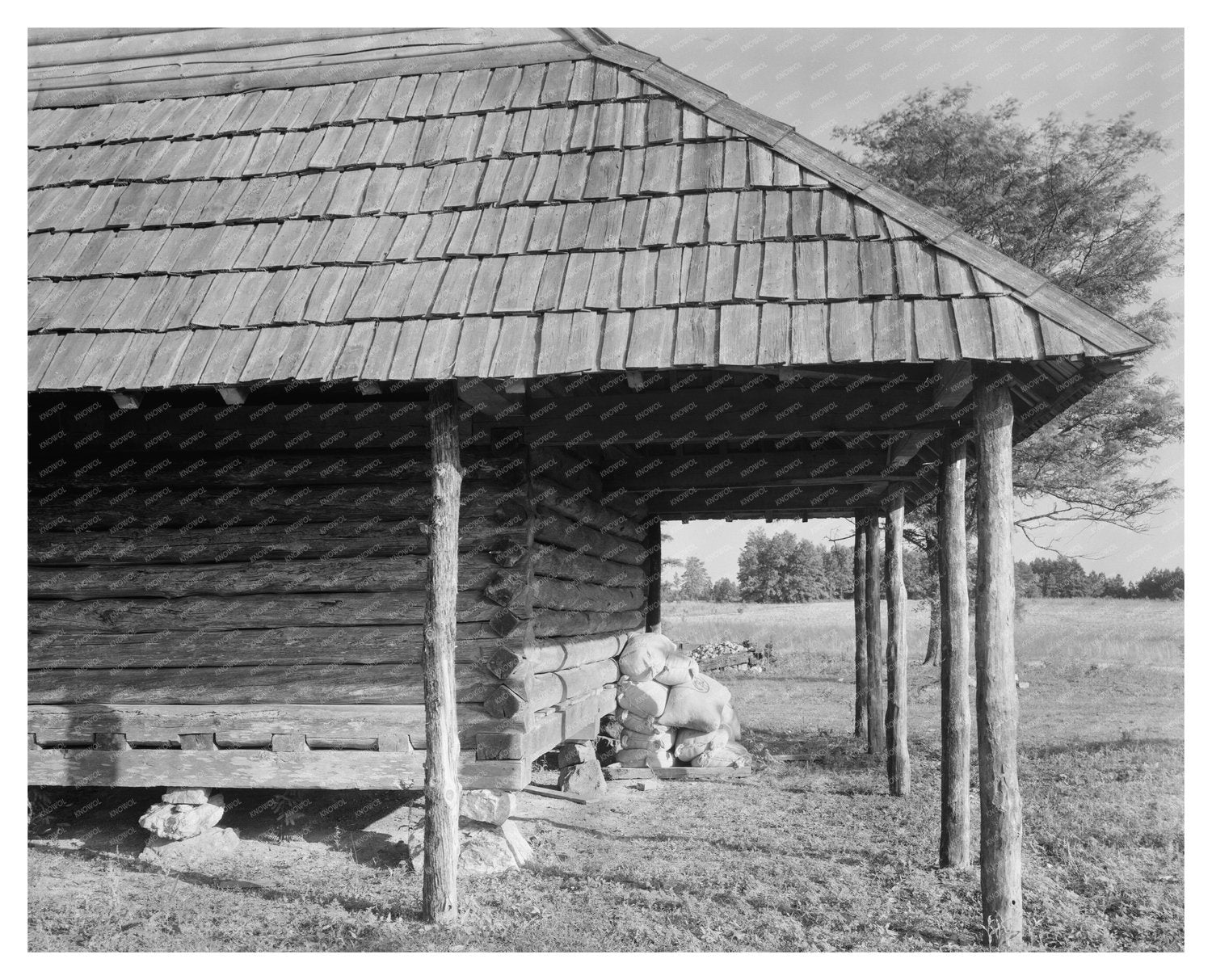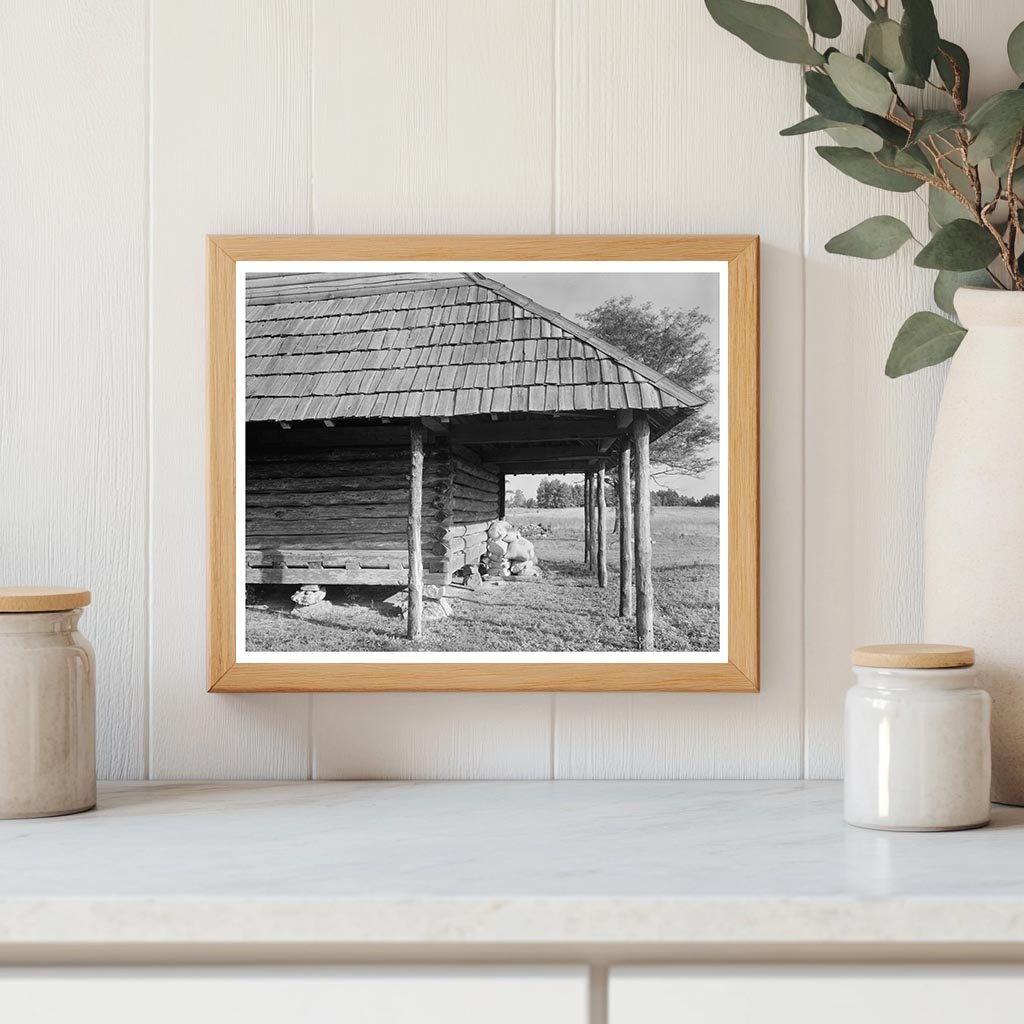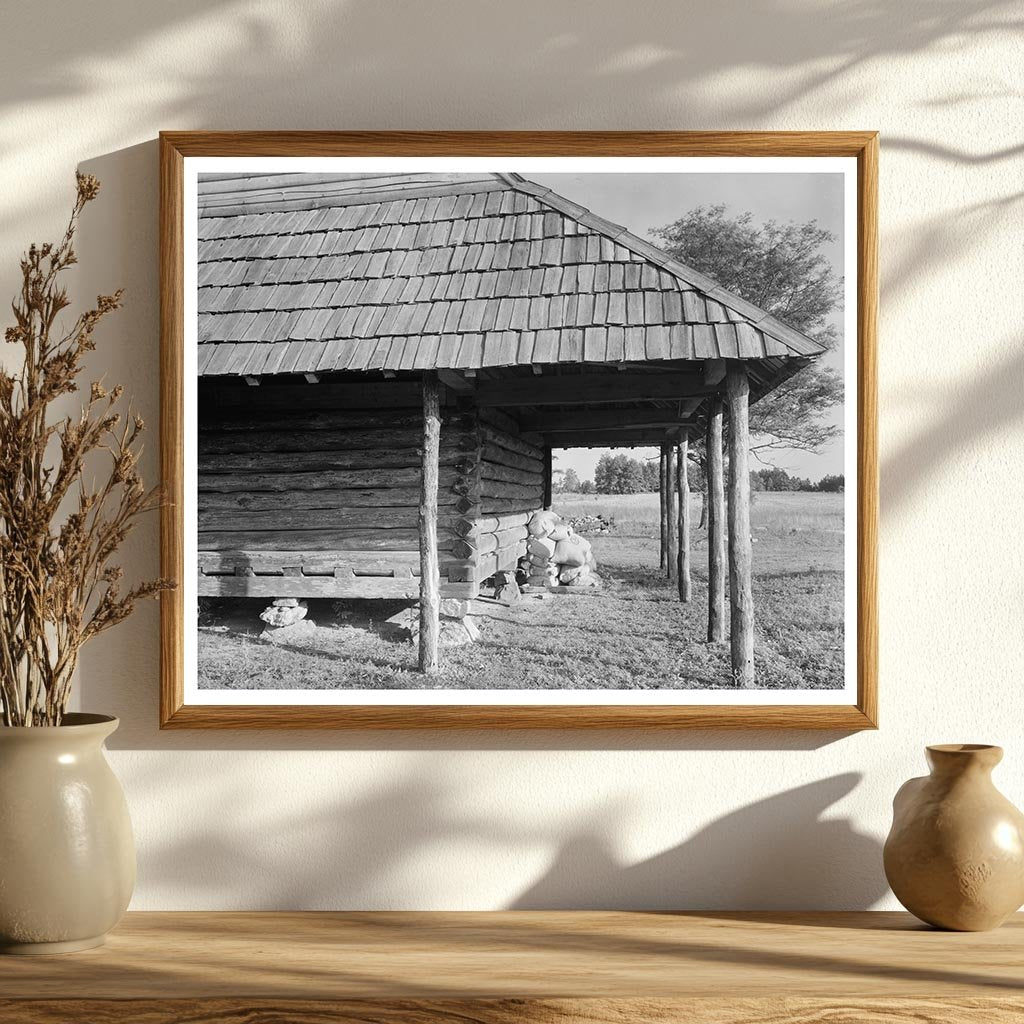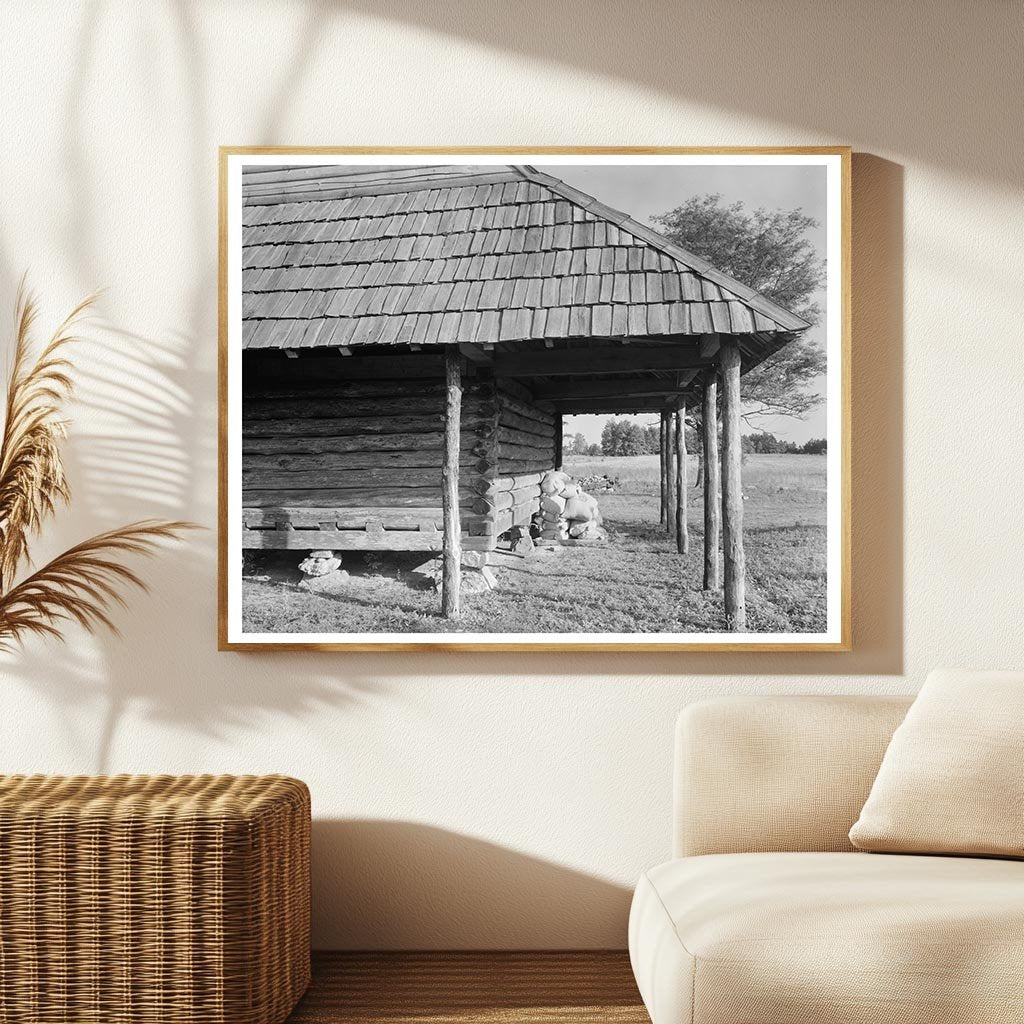



Buck Springs, Vaughan NC, 1820: Historic Log Architecture
This vintage photograph captures Buck Springs, a notable structure located near Vaughan in Warren County, North Carolina. Built circa 1820, Buck Springs exemplifies the log building architecture prevalent in the region during the early 19th century. The image is part of the Carnegie Survey of the Architecture of the South, emphasizing the historical significance of such structures in understanding early American architectural styles.
The restoration of Buck Springs has allowed it to be preserved as part of a state park, providing visitors with a glimpse into the architectural heritage of North Carolina. The building is documented in Thomas Tileston Waterman’s The Early Architecture of North Carolina, published in 1941, which further highlights its importance in the context of Southern architecture.
This photograph, credited to Frances Benjamin Johnston, was acquired from her estate in 1953 and serves as a valuable historical record. It is part of the Library of Congresss extensive collection, which aims to educate the public about the architectural history of the American South.

Buck Springs, Vaughan NC, 1820: Historic Log Architecture
